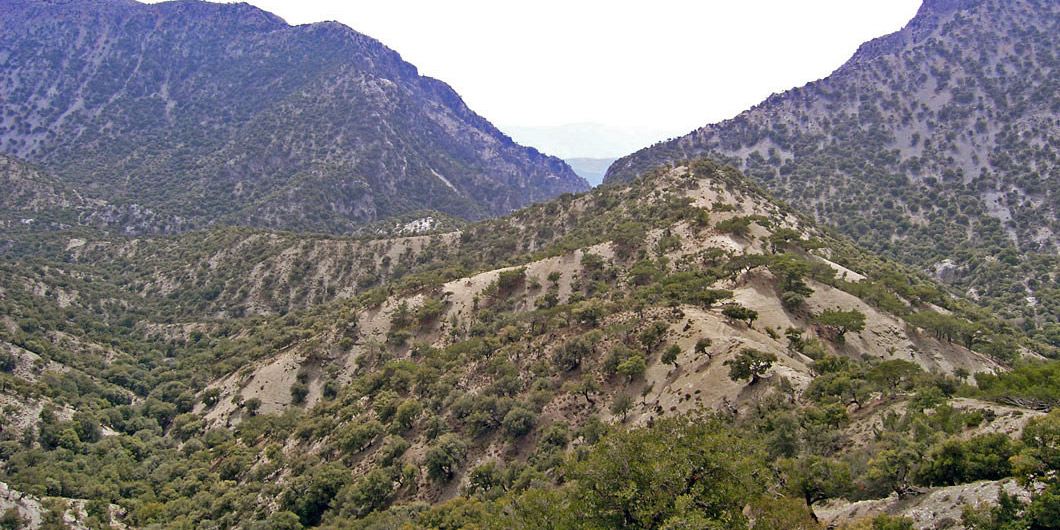Rouvas Forest is a key ecosystem, based on an oak forest – it is of national importance.

Covering the inland slopes of Psiloritis, it is defined by the peaks of Ambelakia and Samari to the south, Chalazokephala to the west, Skinaka and Koudouni to the north and Gyristi to the east. The forest covers some 30,000 stremmata (7400 acres).
The trees growing here have attained a great age: the trunk diameters are more than a metre wide, and they grow to 15 m high. They grow so thickly that they form a proper bio-system of a forest with many shrubby types to fill out the ranks of vegetation. With them are other species typical for such an environment – holm oak, mock-privet, maple, cypress, pine, plane, pear and others.
The importance of the forest is due to the fact that the oaks have grown beyond their usual body shape and size, acquiring the characteristics and a size different from what we are used to see in Greece. The chances are that at some time in the past the normal adverse factors (people, goats etc) were removed – so that the oak bush managed to develop in the manner we see today. On the slopes round and about the forest are scattered mitata, for the most part today in ruins.

Two especial spots within the forest are at ‘Two Oaks’ on the west flanks, from which vantage point the entire Rouvas forest can be beheld, and again at Samari, on the southern peak of that name, whence panoramic views open up of the whole Zaros region on down to the Mesara Plain.
Here is found the mountain refuge-hut of Zaros.
Lower down at the centre south part of the forest, near the north entrance/exit of the Aghios Nikolaos gorge is a landscaped area designated for recreational purposes within the forest: it is called Aghios Ioannis after the church there.














